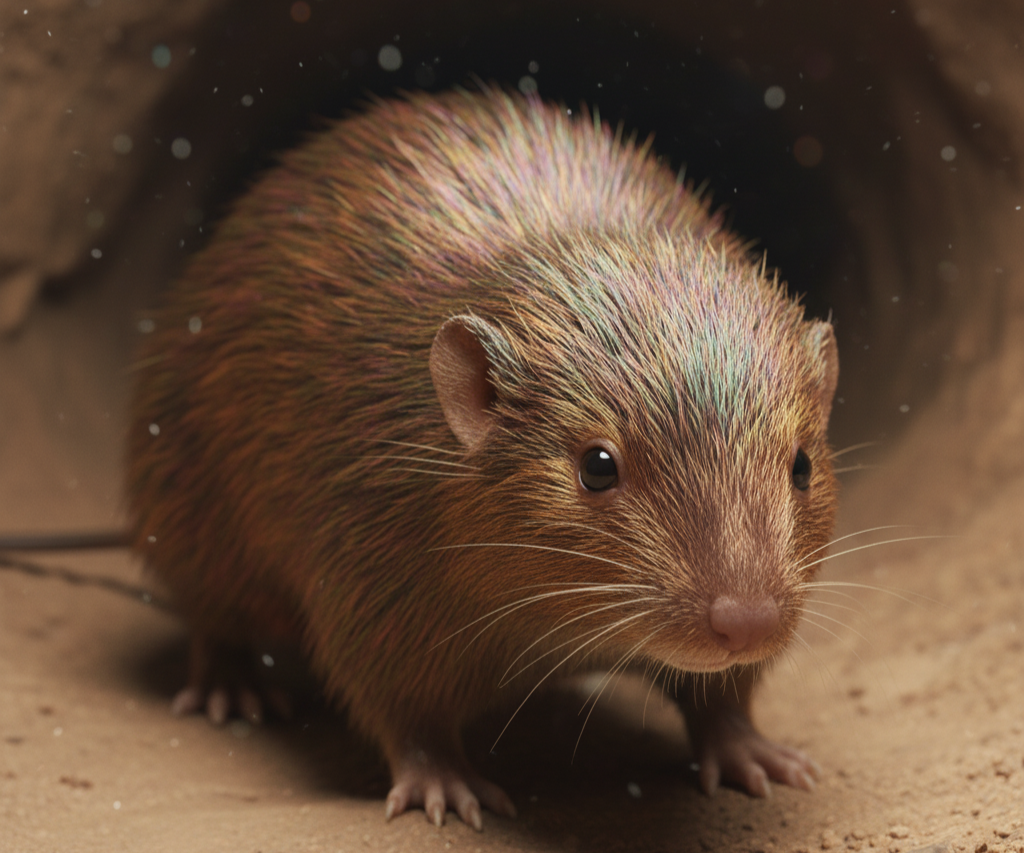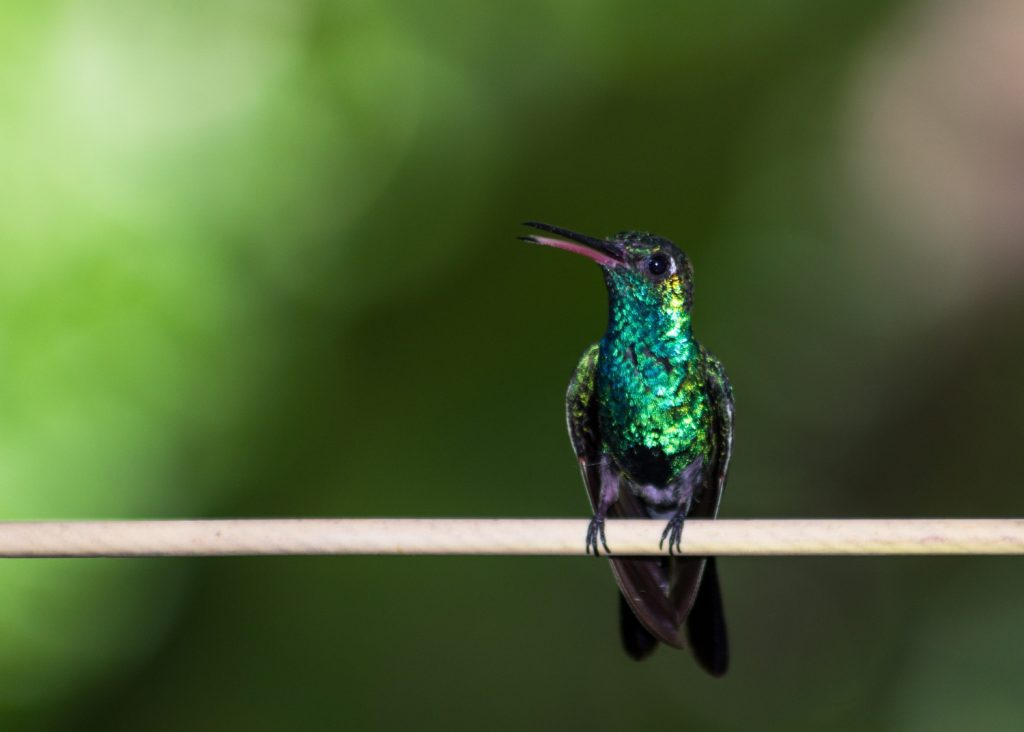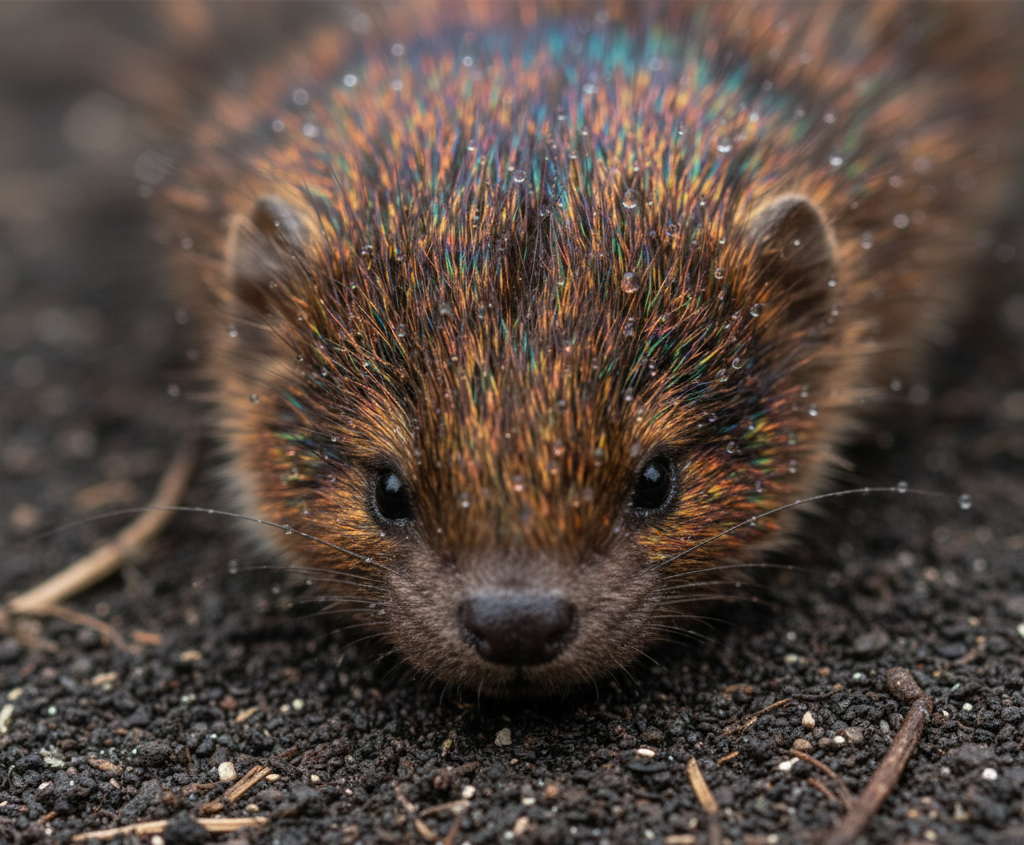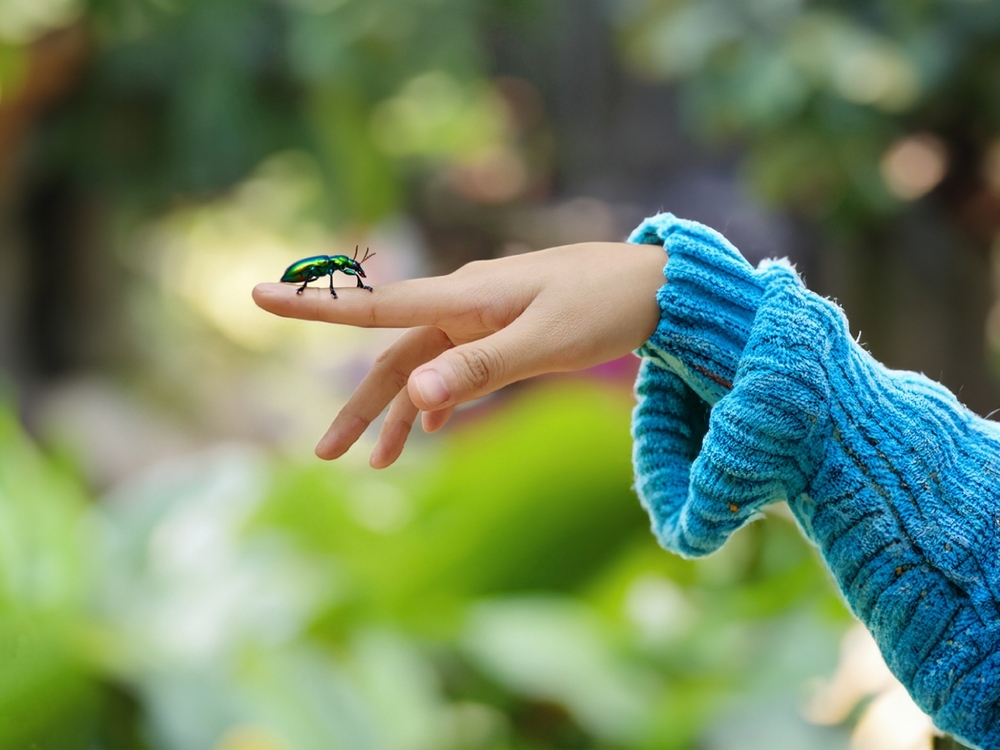Your cart is currently empty!
New Study Reveals Iridescent Fur is Surprisingly Common in Mammals

When we think of mammals, we often picture a world painted in earthy tones—the rich browns of a bear, the soft grays of a squirrel, or the stark blacks and whites of a zebra. For centuries, this muted palette has been a defining feature of the mammalian class. A groundbreaking 2025 study, however, is challenging this long-held perception, revealing a hidden shimmer in the animal kingdom.
Led by Jessica Leigh Dobson at Ghent University, a team of researchers has confirmed that iridescence—the same phenomenon that gives a soap bubble its rainbow sheen or a peacock its dazzling tail—is a surprisingly common trait, having evolved independently in at least 14 species of mammals. The discovery, published in the Journal of the Royal Society Interface, dismantles the belief that this vibrant, angle-dependent color was a bizarre anomaly found only in one creature: the golden mole.
The findings not only add a new layer of complexity to our understanding of mammals but also highlight how some of nature’s most fascinating secrets can remain hidden in plain sight.
A Shimmer of Light: Nature’s Optical Trick

Unlike the colors produced by pigments, which work by absorbing certain wavelengths of light and reflecting others, iridescence is a structural color. It’s a far more complex and dynamic phenomenon—an optical effect created not by chemistry, but by physics. It emerges when light interacts with microscopic, precisely ordered nanostructures on a surface, manipulating the very path of the light waves themselves.
In the case of these iridescent mammals, the magic happens in the hair’s outer layer, the cuticle. Using powerful electron microscopy, researchers discovered a marvel of natural engineering. The normally rough, overlapping scales of the hair are transformed into a perfectly smooth, flattened surface. Within this surface lies a series of ultra-thin, stacked layers of keratin (a protein) and what is presumed to be a lipid-rich material, each with a different refractive index. This meticulously built arrangement functions as a natural “thin-film reflector.” When light hits these layers, some waves are reflected back, interfering with one another to cancel out certain colors and amplify others.
The color we see depends entirely on the viewing angle, creating a subtle, moving glint. This is the same physical principle—thin-film interference—that makes an oil slick on water shimmer with color.
What is truly remarkable is that every iridescent mammal species identified in the study—from rodents to otter shrews, lineages that diverged millions of years ago—uses this identical, complex mechanism. This offers a stunning example of convergent evolution, a powerful testament to the idea that different species, facing similar environmental challenges, can independently arrive at the exact same elegant solution.
Meet the Shimmering Mammals
For over a century, the golden moles of sub-Saharan Africa were considered a biological curiosity. These small, functionally blind burrowers possess a metallic, iridescent coat that seemed to defy the rules of mammalian coloration. They were the exception that proved the rule of a visually drab class. The recent study, however, shows they are not alone. The list of iridescent mammals is more diverse and surprising than previously imagined.
The Vlei Rats (Genus Otomys)

This group of African rodents, which includes the tropical vlei rat (Otomys tropicalis) whose blue glint first sparked the entire investigation, are highly specialized for life in wet, grassy environments. The name “vlei” is an Afrikaans term for a marsh or swamp, and these animals are perfectly adapted to it. They build nests of shredded grass hidden deep within dense vegetation and navigate their world via a network of distinct runways they create and maintain. This means they spend their lives moving through a dense, abrasive matrix of grass stems. Unlike the nocturnal otter shrew, vlei rats are often crepuscular (active at dawn and dusk) or even diurnal. This detail is crucial, as it means they are active in the light and possess sight, opening the door to the possibility that their shimmer, whatever its origin, could serve a visual function.
The African Marsh Rat (Dasymys incomtus)

Like the giant otter shrew, the African marsh rat is a wetland specialist, critically dependent on intact marshes and reed beds along the banks of rivers. It is primarily nocturnal and semiaquatic, an adept swimmer that forages on the succulent stems of water-loving plants in the dark. It constructs intricate nests and burrows in riverbanks, which are often accessed via underwater entrances. Given its nocturnal habits and life in dense cover, it is presumed to rely far more on hearing and touch than on sight for navigating its world. This lifestyle provides another strong piece of evidence against a primary visual signaling function for its shimmer, reinforcing the conclusion that the selective pressures for a hydrodynamic, water-repellent, and self-cleaning coat are the most likely drivers for the evolution of its unique fur.
The Giant Otter Shrew (Potamogale velox)

Despite its name, the giant otter shrew is neither a true shrew nor an otter. It belongs to the order Afrosoricida, the same group as golden moles, making its shimmering coat a fascinating case of shared evolutionary potential. This unique Central African carnivore inhabits the fast-flowing rainforest streams and rivers, where it has perfected a nocturnal, semiaquatic lifestyle. It is a masterful swimmer, propelling itself not with its feet but with powerful, fish-like movements of its long, muscular tail. It hunts primarily by touch, using a broad muzzle covered in sensitive whiskers to detect crabs and fish in murky water. With small eyes and poor vision, it navigates a world of darkness and sensation, making its iridescent fur a profound puzzle and a prime example supporting the idea that the shimmer is a by-product of a coat evolved for something other than visual display.
A Practical Sheen: The Real Reason for the Shimmer

The central puzzle of mammalian iridescence is why it exists at all, especially in species that are blind, nocturnal, or live in environments where visibility is low. The brilliant colors of a peacock are for attracting a mate, but what purpose does a subtle shimmer serve on a creature that “swims” through soil or hunts by touch in a dark stream?
The answer, researchers believe, lies not in visual communication but in a remarkable mechanical advantage. This idea, known as the “epiphenomenon hypothesis,” suggests that the iridescence is simply a beautiful by-product—an effect, not a function—of natural selection favoring a more practical trait. In this view, the shimmer itself was never the goal of evolution.
A powerful thread connects every one of the iridescent mammals: they all interact constantly with a dense, abrasive, or fluid environment where a specialized coat is a major asset.
- For the golden mole, the smooth, flattened hair structure reduces friction and drag, conserving precious energy and allowing it to move more efficiently through abrasive soil while keeping its fur clean.
- For semiaquatic species like the giant otter shrew and African marsh rat, such a coat is hydrodynamic, repelling water and helping the animal stay clean, dry, and insulated against the cold.
- For the vlei rats and African grass rat, a smooth pelage resists abrasion from dense grass, prevents snagging, and reduces the buildup of dirt and moisture, which is crucial for hygiene and mobility.
The specific nanostructure required to create this durable, low-friction surface just happens to be the exact same structure that produces iridescence. The primary driver of evolution was function, and the shimmer was a coincidental effect.
However, this may not be the end of the story. For social, daylight-active animals like the African grass rat, it’s possible this accidental shimmer was later co-opted for a new purpose through a process called exaptation. This is where a trait that evolved for one reason is repurposed for another. The shimmer, initially a by-product of a mechanically superior coat, could have become a subtle, close-range “private signal” to communicate with colony members without attracting predators from afar.
The Power of a Second Look

Perhaps the most inspiring part of this story is how it began. The entire investigation was launched when Dobson noticed an unexpected “electric-blue glint” on a tropical vlei rat specimen in the collection of the Royal Museum for Central Africa in Belgium. That single moment of curiosity, looking closely at a creature that had been sitting in a museum drawer for decades, set off a cascade of research that has fundamentally changed our view of mammalian diversity.
For over a century, scattered anecdotal reports of “shiny” mammals had been dismissed as oddities. This study connected those historical clues with modern analytical tools, proving their significance. It serves as a powerful reminder of the immense value of natural history collections, which are not just static archives but vibrant repositories of data waiting for new questions to be asked.
The discovery of widespread mammalian iridescence teaches us that the natural world is filled with secrets that are not hidden in remote jungles but are often sitting right before our eyes. It champions the simple, profound act of looking again, with fresh perspective and a curious mind, reminding us that there is always more to discover.
Source:
- Dobson, J. L., Babarovic, F., Nicolaï, M. P., Debruyn, G., Shawkey, M. D., & D’Alba, L. (2025). Multilayer thin-film produces recurrent evolution of iridescence in mammals. Journal of the Royal Society Interface, 22(230). https://doi.org/10.1098/rsif.2025.0508
